#daughter of gustav iv adolf of sweden
Explore tagged Tumblr posts
Text

Cecilia of Sweden, Grand Duchess of Oldenburg (1807-1844). By Emanuel Thomas Peter.
She was the daughter of King Gustav IV Adolf of Sweden and Frederica of Baden.
#Konungariket Sverige#kingdom of sweden#house of holstein gottorp#Holstein Gottorpska ätten#Huset Oldenburg#house of oldenburg#Cecilia av Sverige#cecilia of sweden#Cecilia av Oldenburg#emanuel thomas peter
7 notes
·
View notes
Text
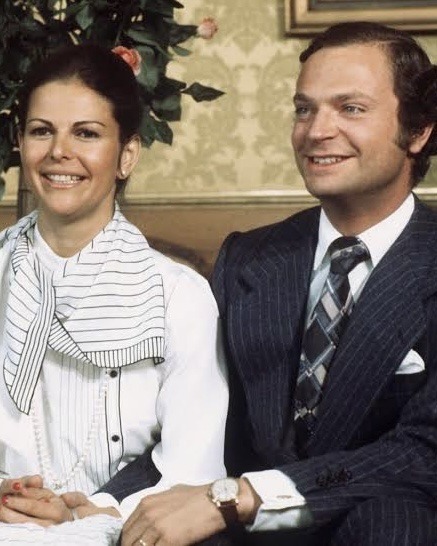
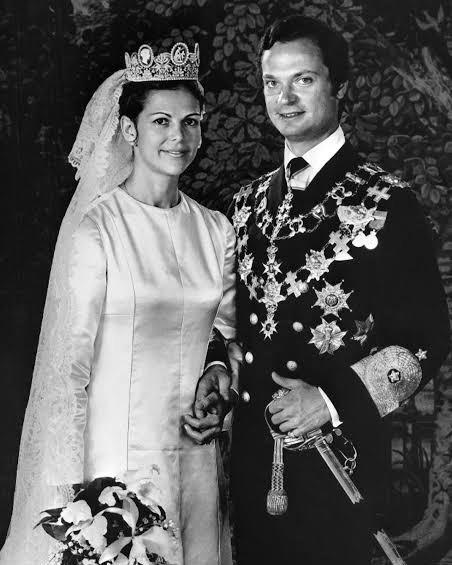
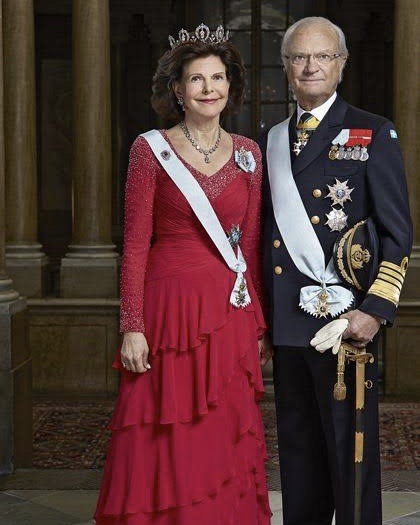
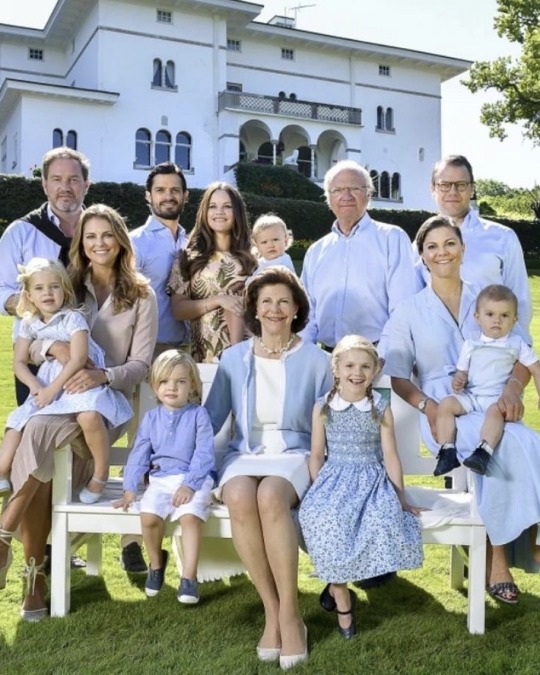
Happy 47th wedding anniversary to King Carl XVI Gustaf and Queen Silvia of Sweden!
The couple tied the knot on June 19 1976 at the Stockholm Cathedral, having met 4 years prior at the 1972 Summer Olympics in Munich; Silvia was assigned to be Carl Gustaf's translator during the games. Carl Gustaf acceded to the throne in the following year following the death of his grandfather.
Their engagement was announced on March 12 1976; the King proposed with a 2-carat ring that belonged to his late mother. Their wedding symbolized the first marriage of a reigning Swedish monarch since King Gustav IV Adolf married Princess Frederica of Baden in 1797; and Silvia became Sweden's first queen consort since 1965.
Their chosen date of June 19 is a symbolic date for the Bernadotte family and one in which multiple family members have gotten married on, including Carl Gustaf and Sofia's eldest daughter, Crown Princess Victoria.
They have three children and eight grandchildren: Crown Princess Victoria, Duchess of Västergötland (45), mother of Princess Estelle (11) and Prince Oscar (7); Prince Carl Philip, Duke of Värmland (44), father of Prince Alexander (7), Prince Gabriel (5) and Prince Julian (2); and Princess Madeleine, Duchess of Hälsingland and Gästrikland, (41), mother of Princess Leonore (9), Prince Nicolas (8) and Princess Adrienne (5).
30 notes
·
View notes
Photo

Cecilia of Sweden, Grand Duchess of Oldenburg (22 June 1807 - 27 January 1844)
#cecilia of sweden#grand duchess of oldenburg#daughter of gustav iv adolf of sweden#wife of augustus grand duke of oldenburg#history#women in history#19th century#art
4 notes
·
View notes
Photo

Albert was the King of Saxony and a member of the House of Wettin.
He was the eldest son of Prince John (who succeeded his brother Frederick Augustus II on the Saxon throne as King John in 1854) by his wife Amalie Auguste of Bavaria. In Dresden on 18 June 1853, Albert married Princess Carola, daughter of Gustav, Prince of Vasa and granddaughter of Gustav IV Adolf, the last king of Sweden of the House of Holstein-Gottorp.
10 notes
·
View notes
Text
GUSTAV III
King of Sweden
(born 1746 - died 1792)
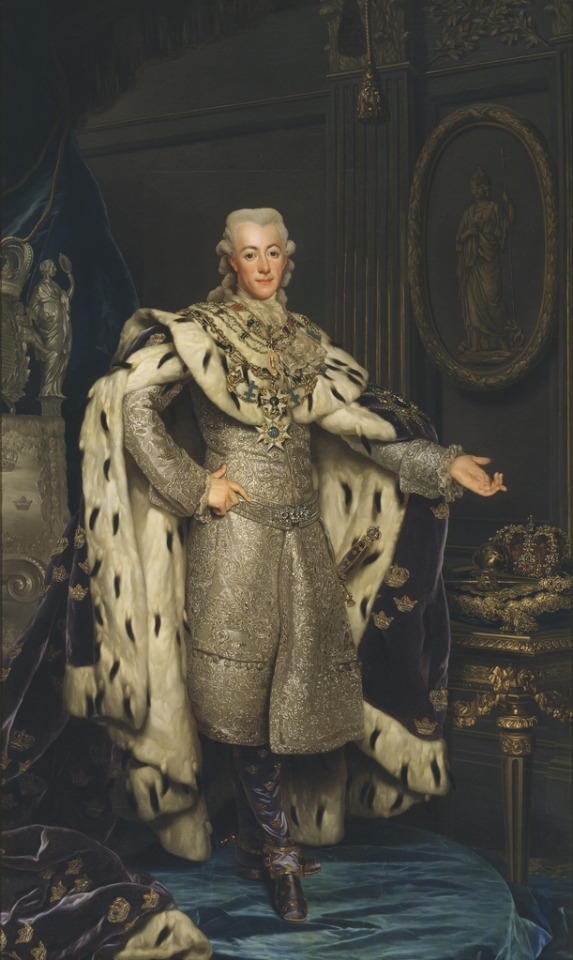
pictured above is a portrait of the King of Sweden, painted by Alexander Roslin in 1777
-------------------- ~ -------------------- ~ --------------------
GUSTAV was born in 1746, in Stockholm, the capital of the Kingdom of Sweden, during the reign of Fredrik I, King of Sweden.
He was the second child of Adolf Friedrich of Holstein-Gottorp, Prince-Bishop of Lübeck and Princess Luise Ulrike of Prussia. Thus, he was born a member of the main line of the HOUSE OF HOLSTEIN-GOTTORP and was from birth a PRINCE OF HOLSTEIN-GOTTORP.
Although his family was not of Swedish origins, he was born in Sweden because his father had been elected as the heir to the Swedish throne.
By 1751, his father acceded as Adolf Fredrik, King of Sweden, officially founding the Swedish line of the HOUSE OF HOLSTIEN-GOTTORP. And he, at five years old, became the CROWN PRINCE OF SWEDEN.
In 1766, he married PRINCESS SOPHIE MAGDALENE OF DENMARK, the eldest daughter of Frederik V, King of Denmark, and Princess Louisa of Great Britain. He and his new wife were the same age, having married at the age of 20. With her, he had two sons.
Check a list of his children at the end of this post!
A month after his 25th birthday in 1771, his father died, and he succeeded as GUSTAV III, KING OF SWEDEN. At that time, the Swedish Parliament (called Riksdag) held more power than the Monarch.
So, by 1772, he rebelled in the Revolution of 1772. And, through his blodless coup d'état he had a new Constitution approved, the Instrument of Government of 1772.
Through this new constitution, he, as the Monarch, received the power to assemble Parliament only by his own wishes. But he was determined to rule without them.
But, as Parliament still retained power to approve taxes and wars, in 1789, he assembled them to get money to the Russo-Swedish War.
This Parliament only lasted for over three months. Though he was successful in approving a new amendment to the Constitution, known as the Union and Security Act.
The act declared that he, the Monarch, could choose his own Privy Council and also gave him the power over war decisions without having to ask Parliament. It abolished some privileges of the nobility, such as their sole right to own lands or hold high positions in the government. Parliament lost the rights to create new laws but was left with power over taxes.
Not content with his government, by late 1791, the nobility started to plan his assassination.
On 16 March 1792, he went to a masquerade ball at the Gustavianska Opera House in Stockholm. That night, he received a letter warning of a plot to assassinate him, and it is said that he showed up at an open balcony to prove himself fearless.
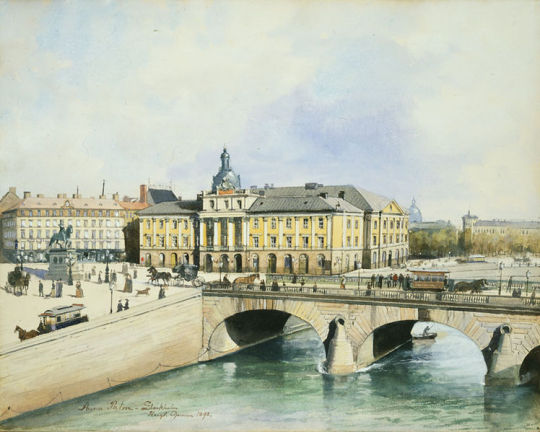
pictured above is the Gustavianska Opera House, painted by Anna Palm de Rosa in 1892, before the building was demolished
Later that the night, a former military officer Jacob Johan Anckarström took advantage of the masquerade crowd and shot fire on him. But, as it was not a mortal shot, he continued to rule for a couple of days.
However, on 29 March 1792, the King of Sweden succumbed to sepsis at the age of 46. He died at Stockholm Palace in Stockholm, the capital of the Kingdom of Sweden.
-------------------- ~ -------------------- ~ --------------------
On his death, his only surviving son, the 13-year-old, Crown Prince Gustav Adolf, succeeded to the Swedish throne as King Gustav IV.
It was also also a turbulent reign as his son was deposed in 1809 by the same Parliament he had endlessly fought, that ended with his descendants being forever excluded from the Swedish line of succession.
-------------------- ~ -------------------- ~ --------------------
GUSTAV and his wife SOPHIE MAGDALENE had two children.
Gustav IV Adolf, King of Sweden - husband of Princess Friederike of Baden; and
Karl Gustav, Duke of Småland - died at age six months.
-------------------- ~ -------------------- ~ --------------------
COLLECTION: Royal Facts & Events - #RF&E
The assassination of Gustav III, King of Sweden, was mentioned in my post on the life of his son, Gustav IV Adolf, King of Sweden.
#gustav iii#king of sweden#swedish line#holstein gottorp#swedish royals#swedish royal family#monarchy#monarchies#royals#royalty#royal history#swedish history#history#history lover#history with laura#regicide#18th century#RF&E
5 notes
·
View notes
Text
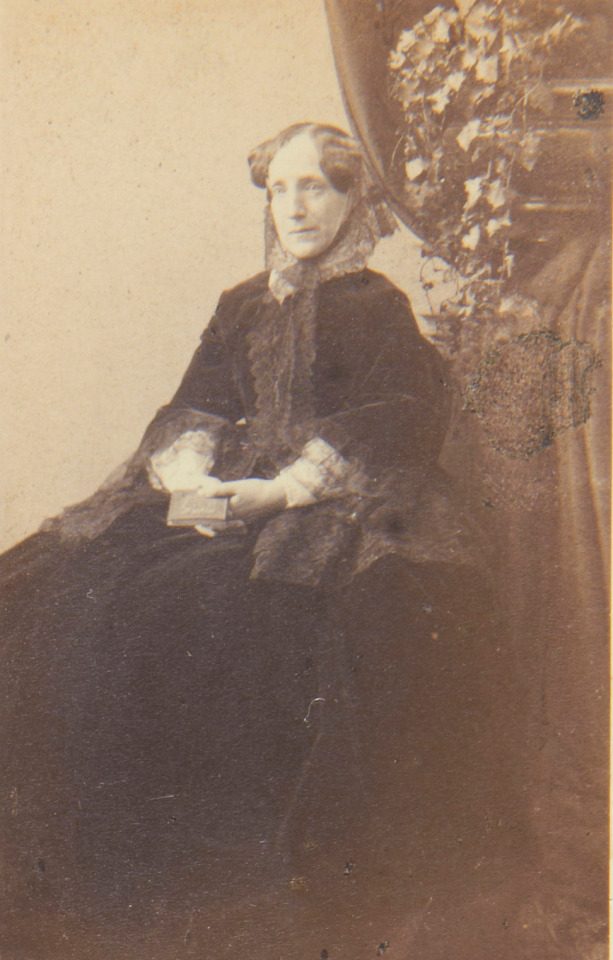

Sophie, Dowager Grand Duchess of Baden (1801-1865) in 1864.
Sophie was born in Stockholm, Sweden, on 21 May 1801. She was the daughter of King Gustav IV Adolf of Sweden and his wife, Princess Frederica of Baden. After her birth, she was raised under the supervision of the royal governesses Hedvig Ulrika De la Gardie and Charlotte Stierneld in succession.
Sophie was eight years old when her father was deposed by the Coup of 1809 and she left Sweden with her family. Between the time of the coup which deposed her father, and leaving Sweden, she and her mother were under house arrest. During this period, she was described in the famous diary of Hedwig Elizabeth Charlotte of Holstein-Gottorp as a stubborn girl who was much more haughty and possessed less self-control than her brother Gustav. An anecdote describes the contrast between the siblings. When Fredrika and her children were given permission to join the deposed king, famous Swedish nobleman Axel von Fersen came to discuss the arrangements. When he was about to leave, Sophie's older brother ran to the door to open it for Fersen. The former queen Fredrika is quoted as saying, "Sophie would never in the world have done that, she thinks of herself too highly for that."
In 1815, she was engaged, and on 25 July 1819 in Karlsruhe, Sophie married her half-grand-uncle Prince Leopold of Baden, the son of a morganatic marriage. The marriage with Leopold had been specifically arranged by her uncle, Grand Duke Karl I of Baden, to improve the chances that Leopold would one day succeed him as grand duke because of Sophie's royal lineage; Leopold, though his right to the throne was recognized, was originally the issue of a morganatic marriage. During the reign of Louis I, Grand Duke of Baden, they lived a modest life away from court, as Louis did not want the heir to the throne at court. In 1830, her husband ascended to the grand ducal throne as Leopold I, and Sophie became Grand Duchess of Baden.
Sophie is described as wise and dutiful but strict. She kept late hours and arose late in the mornings, after which she spent hours writing letters to various relatives around Europe in her négligée. She was interested in science, art and politics, and kept herself well informed on all political events of the day through her correspondence. Her ties to the Viennese court were particularly tight, and it was to Vienna her sons were sent to complete their education. Sophie retained a certain bitterness over the deposition of her father, and took it very badly when her brother was deprived of his status as a Swedish prince.
During the tumult caused by the appearance of Kaspar Hauser, Sophie was rumoured to have ordered Hauser's assassination in 1833. This damaged her relationship to her husband, and Sophie was said to have had an affair. During the revolution of 1848, she was forced to flee from Karlsruhe with her family to Strasbourg. They returned in 1849, after the revolt had been subdued by Prussian forces. She became a widow in 1852. Sophie convinced her son Frederick to enter an arranged dynastic marriage rather than a marriage to his love, Baroness Stephanie von Gensau.
In 1852, the Swedish royal house wished to make peace with the deposed Swedish royal house, and Oscar I of Sweden and Josephine of Leuchtenberg tried to arrange a meeting, but without success. In 1863, however, Sophie met the Swedish heir presumptive Prince Oscar II of Sweden and his consort Sophie of Nassau. The meeting was a success: Sophie asked him about how the Stockholm of her childhood had changed, and when they left, she presented the couple with a gift to their son prince Gustaf, a medallion with the inscription "G" and the crown of the Swedish Crown Prince, because he had the same name as her brother.
Family Resemblance
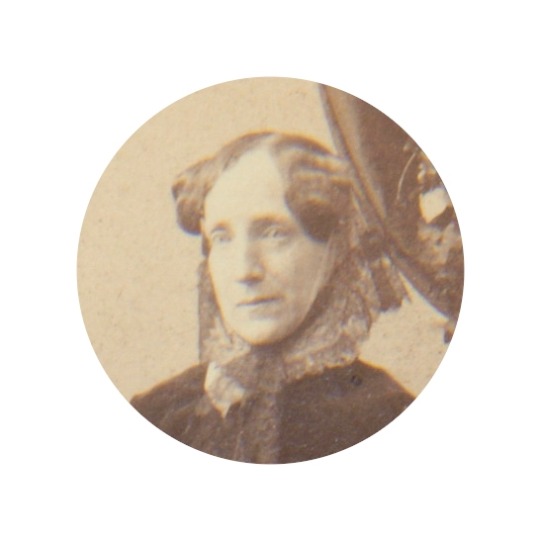

Her granddaughter, Queen Victoria of Sweden née Baden took after her.
Source: Royal Collection
#Grand Duchess sophie of baden#Dowager Grand Duchess sophie of baden#princess Sophie of Sweden#baden#queen victoria of sweden#princess Victoria of baden#german royal#german royalty#swedish royalty#swedish royal#1864#1860s
22 notes
·
View notes
Photo










House of Hohenzollern & of Vasa: Princess Maria Eleonora of Brandenburg
Maria Eleonora was born as the third child and second daughter to The Elector of Brandenburg and his wife Anna of Prussia. Maria Eleonora’s maternal great-grandfather was William, The Duke of Jülich-Cleves-Berg, the younger brother of the English queen consort Anne of Cleves.
Maria was raised in the Lutheran church by her mother, although her father had taken the reformed faith. Next to Swedish king Gustav II. Adolf, who would later become her husband, also Władysław IV of Poland proposed to Maria Eleonora. While this match was favored by The Elector, in the end like in her education, Maria’s mother won the upper hand and Maria Eleonora became not the queen of Poland but of Sweden. Contemporaries called her “the most beautiful queen in Europe.”
While the marriage was apparently happy, Gustav was a lot of the time on campaign during the Thirty Years War. Maria even joined him on some. But she never held any political power because she is said to have been shallow, not very intelligent and to have had a strong temper. However, the latter might have been a symptom of her on-going mental health issues. Those were also fueld by her incapability to produce an heir. Of the four children she bore, only one, the youngest, survived into adulthood. She would later be known as Christina, Queen of Sweden, and abidcate the throne to convert to Catholicism.
After the death of her husband, she moved to Gripsholm castle where the regent for her six year old daughter her she would have no more rights than any other widowed Swedish noble women. He also had all her correspondence with her kin in Europe checked. Maria Eleonora felt like she was treated like a traitor. In 1640, she secretly fled Sweden. Her missing was only noticed a week later and reported after another four day. Maria Eleonora from now on lived at the Danish court which had also welcomed her with canon shots.
But two years later, on Christmas Eve, a contract was signed that she had to leave Denmark. She moved to Insterburg (today: Chernyakhovsk) and received 40,000 Swedish Thaler. Maria Eleonora spent a lot of time at the court of The Elector of Brandenburg and complained about the irregular payments from Sweden. After her daughter took over regency in 1644, the two of them corresponded about a potential Swedish-Brandenburish marriage prospect. In the Summer of 1648, The Queen Dowager finally returned to Stockholm.
Maria Eleonora died on March 28, 1655, at the age of 55. Shortly before her daughter had abdicated the throne. The former queen mother was buried in the Riddarholm Church.
// Martina Gedeck as Maria Eleonora in The Girl King (2015)
#perioddramaedit#period drama#historyedit#historical women#Maria Eleonora of Brandenburg#The Girl King (2015)#17th century#Swedish History#Queen Maria Eleonora of Sweden#German History#European History#House of Hohenzollern#House of Vasa
188 notes
·
View notes
Link
What do Napoleon, the son of a French lawyer, and being kind to prisoners of war have to do with the Swedish monarchy? Significantly more than you would think. In 1810, Jean Baptiste Bernadotte was elected Prince Royal of Sweden, and eight years later became the founding king of the dynasty that rule Sweden to this day, proving that, contrary to what Michael Palin said, sometimes you do vote for a king. To understand the Bernadotte's rise to power, you have to understand late eighteenth century Europe. In the summer of 1789, Louis XVI, an absolute monarch from a long line of absolute monarchs attempted to solve his financial issues using the nominal democratic system France already had in place. This went poorly, and resulted in the common people calling for a new constitution, taking the Bastille, forcing Louis and his family from their opulent home in Versailles, and culminated in a lot of very wealthy and important people losing a very important appendage to the guillotine. "What does this have to do with the price of meatballs in Sweden", you ask? Well, the act of dethroning and de-heading Louis, scion of the long and noble line of Bourbon, sent a shock across Europe. After all, if the French monarch could be thrown out of power, and a 'democracy' instituted in less than two years, were any of the other absolute monarchs of Europe safe? With the English kicked out of their American colonies, and the French monarchy quite literally headless, it seemed that the age of the 'enlightened despot', or the benevolent philosopher dictator was coming to an end. This was particularly worrying to the Swedish king Gustav III who was a great admirer of Marie Antoinette. He was a little more politically savvy than Louis XVI, and he survived his initial summoning of the Riksdag--or the (at the time) nominal Swedish democratic system. However, he made enemies, and bit a bullet Abraham Lincoln style in 1792. Gustav III left his throne to his thirteen year old son, Gustav IV, or Gustav Adolf. The years in which Gustav IV's uncle served as regent were the best of his reign. Gustav Adolf grew into a paranoid and arrogant king, which lead to him losing Finland, Pomerania, and the Aland islands. He was forced to abdicate, and handed the throne to his uncle, Charles XIII. Charles XIII wasn't so much the best choice for king as he was the only choice for king. The House of Vasa had been struggling since the abdication of Queen Kristina in 1654, and Charles had only tenuous claims to the throne himself. Furthermore, Charles was childless and a bit senile. It was clear to Charles and the ruling class of Sweden that if they wanted to continue to have a monarchy, they would have to elect somebody. The year was 1809. Now, the 'election' of a monarch wasn't an uncommon thing, the Vasa's themselves had been elected. In cases where a royal line was dying out without an heirs, or in the case of creating an entirely new country, the nobility of a country would take a look at all the princes of Europe, and see who they liked. This sort of thing had been happening since medieval times, and in the tumultuous world of nineteenth century Europe, it was nothing to balk at. Two distant cousins of Charles XIII were nominated as heirs, but one was an idiot, and the other died. There was a whole host of unsuitable candidates for Crown Prince of Sweden, and a significant portion of the Riksdag were sick of it. They wanted a successful monarch, someone who wasn't an idiot who would lose Finland. And who was more successful than the plucky young Corsican ruling France? There was no way in hell that any self respecting Swede was going to invite Napoleon to be their king--they were an independent country after all. But maybe one of his brothers, or one of his Marshals, the military geniuses who had won Napoleon his vast empire. Enter Jean-Baptiste Bernadotte. A commoner from Southern France, he ran away from his apprenticeship as a lawyer at age eighteen to join the French army. Like Napoleon, he had used the chaos of the French Revolution to rise rapidly through the ranks, eventually becoming a general. He supported Napoleon on his campaigns, eventually being made the French Minister of War, a Marshal, and then the Prince of Ponte-Corvo, a small principality in Italy. Bernadotte was an attractive candidate for a number of reasons. He was a proved general, a proved administrator, and he already had an heir. He was extremely popular in Sweden, having received and made peace with Swedish officers independently of Napoleon's commands. He was also unemployed, which was very convenient for the Swedes. Most importantly, he had been kind to the right person back in the day. Baron Otto Morner was about to become the brother-in-law to the Swedish Chancellor, and he was a big fan of Bernadotte. Bernadotte had been a major player in the Battle of Lubeck, during which Bernadotte and the French had roundly kicked Prussian and Swedish ass, but, like, nicely. Bernadotte captured a contingent of Swedish soldiers, and was so nice to them that Otto Morner was still a huge Bernadotte stan four years later. While in Paris, Morner brought the proposition to Bernadotte, who was incredulously flattered. There was a lot going against Jean Baptiste Bernadotte however, and he knew it. He didn't speak Swedish, he wasn't Lutheran, and all of this was seemingly happening behind Napoleon's back. Napoleon and Jean Baptiste had never been great friends, and they certainly weren't bosom friends at the time, but Bernadotte said that the religion and the language thing could be fixed easily, and that, should Emperor Napoleon and King Charles agree, he would be happy to have his name up for consideration. There was a hiccup. Morner hadn't been acting entirely officially. He was just a lieutenant, not an ambassador. An ambassador had, in fact, been sent to Napoleon, asking him on his opinion on who should succeed Charles XIII. Napoleon had backed King Frederick VI of Denmark-Norway, hoping to unite Scandinavia under a friendly flag. When he found out that Jean Baptiste had been offered the position, he wasn't crazy about Bernadotte being on the Swedish throne, but he loved the idea of a Frenchman on the throne. He went to his ex-stepson, Eugene, the Viceroy of Italy, and offered the position to him. Eugene refused. Napoleon decided to, well, not support Bernadotte, because if Bernadotte failed it would be embarrassing for Napoleon, but he wasn't not not supporting Bernadote. Jean Baptiste discussed it with his wife, and after getting Napoleon's 'do it if you want', formally submitted his name for consideration. Baron Morner was an enthusiastic hype-man, campaigning for Bernadotte much like how modern pundits campaign for elected officials. Though there was a significant faction in favor of Frederick VI, and King Charles still wanted to elect his idiot cousin, Jean Baptiste was elected unanimously. There were a few hurdles that had be overcome before Jean Baptiste could become Prince Royal, however. He had to become a Lutheran, that was non-negotiable. He also had to promise not to give any Swedish posts to Frenchmen, and allow Charles XIII to adopt him. Jean acceded, and took the name Charles John, becoming king Charles John XIV, or Carl Johann XIV to the Swedes. The new Charles was good to his word, and any worries of a French takeover of Sweden were assuaged for good in 1813 when Charles and Swedish forces joined the sixth coalition to fight against Napoleon. Charles was Crown Prince for about eight years, from 1810 to 1818. During this time, he conquered Norway, and unified Sweden and Norway again. By the time he became King, he had thoroughly won over his new people. Jean Baptiste Bernadotte's legacy lives on today in the ruling family of Sweden. The current king, Carl Gustav XVI is the great, great, great, great grandson of Jean Baptiste. When Carl Gustav's daughter, Crown Princess Victoria, becomes Queen Regnant, she will be the eighth Bernadotte monarch.
5 notes
·
View notes
Photo

LGTBQA Royals
Gustaf V of Sweden
On 20 September 1881 he married Princess Victoria of Baden in Karlsruhe, Germany. She was the granddaughter of Sophie, Grand Duchess of Baden, the daughter of deposed Gustav IV Adolf of Vasa Dynasty. Victoria's marriage to Gustaf V united the reigning Bernadotte dynasty with the former royal house of Holstein-Gottorp, and thus was popular throughout Sweden
They went on to have three children
Allegations of a love affair between Gustav and Kurt Haijby led to the court paying 170,000 kronor under threat of blackmail by Haijby. This led to the so-called Haijby affair and several criticized trials and convictions against Haijby which spawned considerable controversy about Gustav's alleged homosexuality
*Some of these are more rumour that fact so please take with a grain of salt and with the story given.*
2 notes
·
View notes
Text
Eva Ekeblad: Who was the pioneering scientist we have to thank for vodka? | Eva Ekeblad
The use of Ekeblad's technique quickly caught on in Sweden, and the region. She returned to Stockholm in 1778, when she witnessed the birth of the future King Gustav IV Adolf. She's not a household name unfortunately but she was the first to make flour and alcohol out of potatoes. Since the supply of wheat, rye and barley were less, potato flour could be used instead.
Honouring Eva, Google designed a brown potato and flour themed doodle showcasing her discovery and achievement. She is the reason why potatoes became a staple food in Sweden around 19th century. For the contributions of her work, she became the first woman elected to the Royal Swedish Academy of Sciences in 1748.Raised in comfort among the nobility, Eva was married at just 16 to Count Claes Claesson Ekeblad, a Councillor of the Realm. The latest 'Google Doodle' features the companies logo spelled out in peeled potatoes and a small pile of flour.
If you went online today, you'll see a Google Doodle of a woman's profile made with potato and flour. Raised in comfort among the nobility, Eva was married at just 16 to Count Claes Claesson Ekeblad, a Councillor of the Realm.Swedish countess and agronomist Eva Ekeblad who was born in 1724, was the first woman to be admitted to her country's Royal Academy of Sciences. Eva Ekeblad also discovered a method of using soap to bleach cotton textile and yarn back in 1751. Today the company is honoring Eva Ekeblad, a Swedish agronomist Monday would have been her 293rd birthday. On Monday, the Google Doodle honored Ekeblad, a Swedish scientist known for discovering that flour and alcohol can be made from potatoes. Eva married Count Claes Claesson Ekeblad, who was twice her age. It is claimed that Ekeblad learned that potatoes were being used in Germany to create alcoholic drinks. That's where Eva Ekeblad, the subject of Monday's Google Doodle, comes in. Ekeblad was born in Sweden on July 10, in the year 1724; she did various researches on multiple uses for plants. We can always count on Google to change up their logo for any important occasion or milestone. This discovery of Eva later helped in decreasing famines in Sweden. Google is celebrating what would have been the 293rd birthday of Swedish countess, scientist and agronomist Eva Ekeblad with a new Doodle. While you may have never heard the name Eva Ekeblad, you've almost certainly come across her major contribution to humanity: Getting people smashed out of their gourds.
0 notes
Photo

Sophie of Sweden, Grand Duchess of Baden (21 May 1801 - 6 July 1865)
#sophie of sweden#sofia vilhelmina katarina maria lovisa charlotta anna#grand duchess of baden#daughter of gustav iv adolf of sweden#wife of leopold grand duke of baden#history#women in history#19th century#art
2 notes
·
View notes
Text
GUSTAV IV ADOLF
King of Sweden
(born 1778 - died 1837)

pictured above is a portrait of the King of Sweden, painted by Johann Baptist Lampi (the Elder) before 1830
-------------------- ~ -------------------- ~ --------------------
GUSTAV ADOLF was born in 1778, at Stockholm Palace in Stockholm, the capital of the Kingdom of Sweden, ruled by his father. He was the eldest son of Gustav III, King of Sweden, and Princess Sophie Magdalene of Denmark.
Check my post about his FATHER!
He was a member of the Swedish line of the HOUSE OF HOLSTEIN-GOTTORP. And, he was from birth the CROWN PRINCE OF SWEDEN.
His father suffered an assassination attempt in 1792, dying a few days later. So, he, at 14 years old, unexpectedly ascended as GUSTAV IV, KING OF SWEDEN, under the Regency of his uncle Karl, Duke of Södermaland.
Check my post on THE ASSASSINATION of his father!
At the end of 1796, he reached the majority at 16 years old, and the Regency of his uncle came to an end.
On the day before his 19th birthday in 1797, he married the 16-year-old PRINCESS DOROTHEA WILHELMINE OF BADEN. His new wife was one of the daughters of Karl Ludwig, Hereditary Prince of Baden, and Princess Amalie of Hesse-Darmstadt. With her, he had five children.
Check a list of his children at the end of this post!
In the early 1800s, Sweden joined the Third and Fourth Coalitions alongside other European countries against Napoleón I, Emperor of the French.
But, when Russia and Prussia made peace with France in 1807, through the Treaties of Tilsit, the Franco-Russian treaty proved to be particularly damaging with Russia invading Finland, a Swedish territory.
The loss of territories on the subsequent Finnish War led to his downfall, with a group of nobles orchestrating a coup to depose him in 1809.
By early March 1809, he was seized, and his family was imprisoned. While his uncle the Duke of Södermaland was put as the head of the new provisional government.
Trying to ensure that his son Crown Prince Gustav would succeed to the throne, by the end of March 1809, he voluntarily abdicated at the age of 30.
However, the Swedish Parliament, called Riksdag, did not accept his son as a successor and decided to remove all of his living descendants and future lineage from the line of succession.
Then, by June 1809, the Riksdag formally elected his uncle as the new Monarch, who acceded as King Karl XIII, despite being 60 years old and having no living legitimate children. So, arrangements had to be made to adopt an heir.
The chosen heir was one of his Danish relatives, Prince Christian August of Schleswig-Holstein-Sonderburg-Augustenburg, who assumed the name of Crown Prince Karl August.
As the deposed King of Sweden, by the end of 1809 and already a 31-year-old, he was forced to leave in exile. He and his family initially settled in the Grand Duchy of Baden, ruled by relatives of his wife.
Though, by 1810, he decided to leave his wife and family behind, moving to the Swiss Confederation, where he used the style of COUNT GOTTORP.
Meanwhile, in Sweden, the chosen Crown Prince died, and another heir had to be found. Swedish officials then turned to Emperor Napoléon I and chose a French Marshall, Jean-Baptiste Bernadotte, Prince of Pontecorvo, who immediately took control of the government as Crown Prince Karl Johan.
While in Baden, in 1811, his brother-in-law succeeded as Karl, Grand Duke of Baden.
Probably before his 34th birthday in 1812, he officially divorced his wife. After the divorce, he used other styles such as DUKE OF HOLSTEIN-EUTIN and LORD or COUNT OF ITTER.
When his uncle died in 1818, the intended Crown Prince succeeded as King Karl XIV, founding the House of Bernadotte.
From 1818, he was a Basel citizen in the Swiss Confederation and had renounced all of his birth rights as COLONEL GUSTAF ADOLF GUSTAFSSON.
After his divorce, he had several mistresses and possibly many illegitimate children. But he only recognized one child that he had with a woman named MARIA SCHLEGEL, around 1820.
Not content with his life in Basel, by 1822, he renounced his citizenship, moving to St. Gallen around 1834.
The former King of Sweden died in 1837, at St. Gallen in the Swiss Confederation. He was 58 years old.
-------------------- ~ -------------------- ~ --------------------
Although in life he had never been allowed to return to Sweden, following the wedding of his great-granddaughter Princess Viktoria of Baden to Gustaf, Crown Prince of Sweden in 1881, the current Bernadotte Monarch, King Oscar II, had him reburied in Sweden.
And, through this wedding, the blood of the House of Holstein-Gottorp returned to the Swedish Royal Family in 1882 with the birth of his 2x-great-grandson Prince Gustaf Adolf, who in 1950 would succeed as Gustaf VI, King of Sweden.
Through them, he is an ancestor of Carl XVI Gustaf, the current Swedish Monarch.
-------------------- ~ -------------------- ~ --------------------
GUSTAV ADOLF and his wife FRIEDERIKE had five children.
Gustav, Prince of Vasa - husband of Princess Luise Amelie of Baden;
Princess Sofia of Sweden - wife of Leopold, Grand Duke of Baden;
Karl Gustav, Grand Duke of Finland - died at age two;
Princess Amalia of Sweden - unmarried; and
Princess Cecilia of Sweden - wife of August I, Grand Duke of Oldenburg.

pictured above is a portrait of the King of Sweden with his wife, painted by Jonas Forsslund circa 1797-1800
And, he also recognized one illegitimate children.
From his mistress MARIA:
Adolf Gustafsson - nothing is known about his life.
-------------------- ~ -------------------- ~ --------------------
COLLECTION: Descendants of the Monarchs of Ireland - #DotMoI
In a span of four generations, Gustav IV Adolf, King of Sweden, was related to the Monarchs of Ireland through the maternal family of his mother.
His great-grandfather was George II, King of Great Britain - the King of Ireland between 1727-60.
His grandmother was Princesss Louisa of Great Britain.
His mother was Princess Sophie Magdalene of Denmark.
#gustav adolf#gustav iv adolf#king of sweden#swedish line#holstein gottorp#oldenburg#swedish royals#swedish royal family#monarchy#monarchies#royals#royalty#royal history#swedish history#history#history lover#history with laura#18th century#19th century#DotMoI
1 note
·
View note
Text
Eva Ekeblad: Who was the pioneering scientist we have to thank for vodka? | Eva Ekeblad
That's where Eva Ekeblad, the subject of Monday's Google Doodle, comes in. It is claimed that Ekeblad learned that potatoes were being used in Germany to create alcoholic drinks. The use of Ekeblad's technique quickly caught on in Sweden, and the region. Today's Google Doodle celebrates the life of Countess Eva Ekeblad, a Swedish scientist and agronomist, on her 293rd anniversary of her birth.
Eva married Count Claes Claesson Ekeblad, who was twice her age. This discovery of Eva later helped in decreasing famines in Sweden. Ekeblad was born in Sweden on July 10, in the year 1724; she did various researches on multiple uses for plants.If you went online today, you'll see a Google Doodle of a woman's profile made with potato and flour. The image honors Eva Ekeblad, a scientist to whom we we owe many potato-based innovations.
Since the supply of wheat, rye and barley were less, potato flour could be used instead. The latest 'Google Doodle' features the companies logo spelled out in peeled potatoes and a small pile of flour.Today the company is honoring Eva Ekeblad, a Swedish agronomist Monday would have been her 293rd birthday. Swedish countess and agronomist Eva Ekeblad who was born in 1724, was the first woman to be admitted to her country's Royal Academy of Sciences. Honouring Eva, Google designed a brown potato and flour themed doodle showcasing her discovery and achievement. Google is celebrating what would have been the 293rd birthday of Swedish countess, scientist and agronomist Eva Ekeblad with a new Doodle. We can always count on Google to change up their logo for any important occasion or milestone. On Monday, the Google Doodle honored Ekeblad, a Swedish scientist known for discovering that flour and alcohol can be made from potatoes. She returned to Stockholm in 1778, when she witnessed the birth of the future King Gustav IV Adolf. She had seven children, one son and six daughters. While you may have never heard the name Eva Ekeblad, you've almost certainly come across her major contribution to humanity: Getting people smashed out of their gourds. She is the reason why potatoes became a staple food in Sweden around 19th century. For the contributions of her work, she became the first woman elected to the Royal Swedish Academy of Sciences in 1748. She's not a household name unfortunately but she was the first to make flour and alcohol out of potatoes.
0 notes
Text
Eva Ekeblad: Who was the pioneering scientist we have to thank for vodka? | Eva Ekeblad
On Monday, the Google Doodle honored Ekeblad, a Swedish scientist known for discovering that flour and alcohol can be made from potatoes. Eva married Count Claes Claesson Ekeblad, who was twice her age. Ekeblad was born in Sweden on July 10, in the year 1724; she did various researches on multiple uses for plants. Eva Ekeblad also discovered a method of using soap to bleach cotton textile and yarn back in 1751.
If you went online today, you'll see a Google Doodle of a woman's profile made with potato and flour. Swedish countess and agronomist Eva Ekeblad who was born in 1724, was the first woman to be admitted to her country's Royal Academy of Sciences. Google is celebrating what would have been the 293rd birthday of Swedish countess, scientist and agronomist Eva Ekeblad with a new Doodle.While you may have never heard the name Eva Ekeblad, you've almost certainly come across her major contribution to humanity: Getting people smashed out of their gourds. Today's Google Doodle celebrates the life of Countess Eva Ekeblad, a Swedish scientist and agronomist, on her 293rd anniversary of her birth.
Since the supply of wheat, rye and barley were less, potato flour could be used instead. Raised in comfort among the nobility, Eva was married at just 16 to Count Claes Claesson Ekeblad, a Councillor of the Realm.She had seven children, one son and six daughters. For the contributions of her work, she became the first woman elected to the Royal Swedish Academy of Sciences in 1748. She is the reason why potatoes became a staple food in Sweden around 19th century. We can always count on Google to change up their logo for any important occasion or milestone. She's not a household name unfortunately but she was the first to make flour and alcohol out of potatoes. The use of Ekeblad's technique quickly caught on in Sweden, and the region. Honouring Eva, Google designed a brown potato and flour themed doodle showcasing her discovery and achievement. This discovery of Eva later helped in decreasing famines in Sweden. It is claimed that Ekeblad learned that potatoes were being used in Germany to create alcoholic drinks. The image honors Eva Ekeblad, a scientist to whom we we owe many potato-based innovations. Today the company is honoring Eva Ekeblad, a Swedish agronomist Monday would have been her 293rd birthday. That's where Eva Ekeblad, the subject of Monday's Google Doodle, comes in.
0 notes
Text
Eva Ekeblad: Who was the pioneering scientist we have to thank for vodka? | Eva Ekeblad
On Monday, the Google Doodle honored Ekeblad, a Swedish scientist known for discovering that flour and alcohol can be made from potatoes. Raised in comfort among the nobility, Eva was married at just 16 to Count Claes Claesson Ekeblad, a Councillor of the Realm. Ekeblad was born in Sweden on July 10, in the year 1724; she did various researches on multiple uses for plants. Raised in comfort among the nobility, Eva was married at just 16 to Count Claes Claesson Ekeblad, a Councillor of the Realm.
She returned to Stockholm in 1778, when she witnessed the birth of the future King Gustav IV Adolf. It is claimed that Ekeblad learned that potatoes were being used in Germany to create alcoholic drinks. That's where Eva Ekeblad, the subject of Monday's Google Doodle, comes in.We can always count on Google to change up their logo for any important occasion or milestone. Honouring Eva, Google designed a brown potato and flour themed doodle showcasing her discovery and achievement.
Today the company is honoring Eva Ekeblad, a Swedish agronomist Monday would have been her 293rd birthday. The latest 'Google Doodle' features the companies logo spelled out in peeled potatoes and a small pile of flour.While you may have never heard the name Eva Ekeblad, you've almost certainly come across her major contribution to humanity: Getting people smashed out of their gourds. She's not a household name unfortunately but she was the first to make flour and alcohol out of potatoes. She is the reason why potatoes became a staple food in Sweden around 19th century. This discovery of Eva later helped in decreasing famines in Sweden. The use of Ekeblad's technique quickly caught on in Sweden, and the region. Since the supply of wheat, rye and barley were less, potato flour could be used instead. Eva married Count Claes Claesson Ekeblad, who was twice her age. If you went online today, you'll see a Google Doodle of a woman's profile made with potato and flour. For the contributions of her work, she became the first woman elected to the Royal Swedish Academy of Sciences in 1748. The image honors Eva Ekeblad, a scientist to whom we we owe many potato-based innovations. Google is celebrating what would have been the 293rd birthday of Swedish countess, scientist and agronomist Eva Ekeblad with a new Doodle. She had seven children, one son and six daughters.
0 notes
Text
Eva Ekeblad: Who was the pioneering scientist we have to thank for vodka? | Eva Ekeblad
It is claimed that Ekeblad learned that potatoes were being used in Germany to create alcoholic drinks. We can always count on Google to change up their logo for any important occasion or milestone. She had seven children, one son and six daughters. Raised in comfort among the nobility, Eva was married at just 16 to Count Claes Claesson Ekeblad, a Councillor of the Realm.
The image honors Eva Ekeblad, a scientist to whom we we owe many potato-based innovations. Honouring Eva, Google designed a brown potato and flour themed doodle showcasing her discovery and achievement. The latest 'Google Doodle' features the companies logo spelled out in peeled potatoes and a small pile of flour.Eva married Count Claes Claesson Ekeblad, who was twice her age. While you may have never heard the name Eva Ekeblad, you've almost certainly come across her major contribution to humanity: Getting people smashed out of their gourds.
Eva Ekeblad also discovered a method of using soap to bleach cotton textile and yarn back in 1751. This discovery of Eva later helped in decreasing famines in Sweden.On Monday, the Google Doodle honored Ekeblad, a Swedish scientist known for discovering that flour and alcohol can be made from potatoes. Raised in comfort among the nobility, Eva was married at just 16 to Count Claes Claesson Ekeblad, a Councillor of the Realm. Google is celebrating what would have been the 293rd birthday of Swedish countess, scientist and agronomist Eva Ekeblad with a new Doodle. The use of Ekeblad's technique quickly caught on in Sweden, and the region. If you went online today, you'll see a Google Doodle of a woman's profile made with potato and flour. For the contributions of her work, she became the first woman elected to the Royal Swedish Academy of Sciences in 1748. Today's Google Doodle celebrates the life of Countess Eva Ekeblad, a Swedish scientist and agronomist, on her 293rd anniversary of her birth. She returned to Stockholm in 1778, when she witnessed the birth of the future King Gustav IV Adolf. Since the supply of wheat, rye and barley were less, potato flour could be used instead. Ekeblad was born in Sweden on July 10, in the year 1724; she did various researches on multiple uses for plants. That's where Eva Ekeblad, the subject of Monday's Google Doodle, comes in. Swedish countess and agronomist Eva Ekeblad who was born in 1724, was the first woman to be admitted to her country's Royal Academy of Sciences.
0 notes